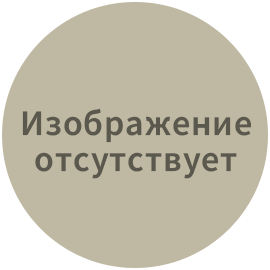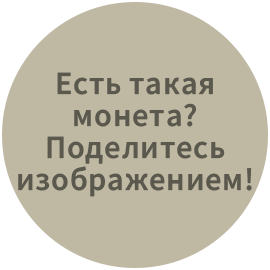Предметы Лихтенштейн
Do you want to take a photo with the camera or select an existing image?
(en) Liechtenstein, officially the Principality of Liechtenstein, is a doubly landlocked German-speaking microstate in central Europe. The principality is a constitutional monarchy headed by the Prince of Liechtenstein and is 4th smallest country in Europe. The country is bordered by Switzerland to the west and south, and by Austria to the east and north. It has an area of 160 km2 (62 mi2) where about 37,000 inhabitants live. The principality is divided into 11 municipalities, its capital is Vaduz and its largest municipality is Schaan. During the middle ages region of a present day Liechtenstein was ruled by different Houses. When the Kyburg dynasty fell in 1264, the Habsburgs under King Rudolph I extended their territory to the eastern Alpine plateau that included the territory of Liechtenstein. This region was enfeoffed to the Counts of Hohenems until the sale to the Liechtenstein dynasty in 1699. On 23rd January 1719, after the lands had been purchased, Charles VI, Holy Roman Emperor, decreed that Vaduz and Schellenberg were united and elevated the newly formed territory to the dignity of Fürstentum (principality) with the name "Liechtenstein". Liechtenstein became a sovereign member state of the Holy Roman Empire. After Napoleonic Wars it became part of the Confederation of the Rhine. Soon afterward, Liechtenstein joined the German Confederation from 20th June 1815 to 24th August 1866, and until the end of World War I, it was closely tied first to the Austrian Empire and later to Austria-Hungary. The economic devastation caused by the war forced the country to conclude a customs and monetary union with its other neighbour, Switzerland, and their connections are still very tight today. Liechtenstein official currency is Swiss Frank. Today country is very wealthy and has one of the highest GDP in the world. Even though it is small in population count it still has many great sportsmen to offer, including Hanni Wenzel, Andreas Wenzel, Tina Weirather and Marco Büchel. Liechtenstein has been a member of the European Economic Area since May 1995.
Thaler (1728-1868)
1 Thaler = ½ Ducat = 120 Kreuzer
1778
Монеты › Стандартные монеты обращения
Серебро 583 • 6.68 g • ⌀ 28 mm
C# 4, N# 24651
1728-1729
Монеты › Стандартные монеты обращения
Серебро 833 • 14.04 g • ⌀ 34 mm
KM# 1, N# 86431
1758
Монеты › Стандартные монеты обращения
Серебро 833 • 14 g • ⌀ 34 mm
C# 1, N# 24650
1778
Монеты › Стандартные монеты обращения
Серебро 833 • 14 g • ⌀ 34 mm
C# 5, N# 24649
1728
Монеты › Стандартные монеты обращения
Серебро 833 • 28.07 g • ⌀ 42 mm
KM# 2, Dav EC III# 1578, N# 92554
1758
Монеты › Стандартные монеты обращения
Серебро 833 • 28.06 g • ⌀ 41 mm
C# 2, Dav EC III# 1579, N# 24647
1778
Монеты › Стандартные монеты обращения
Серебро 833 • 28.06 g • ⌀ 41 mm
C# 6, Dav EC III# 1580, N# 24648
1862 (1862-1966)
Монеты › Стандартные монеты обращения
Серебро 900 • 18.52 g • ⌀ 33 mm
Y# 1, KahntDS# 281, Thun# 468, Dav GT III# 215, N# 23759
1862 (1966)
Монеты › Монеты не для обращения
Золото 900 • 29.5 g • ⌀ 34 mm
Y# 1a, N# 23761
1862 (1966)
Монеты › Монеты не для обращения
Платина • 33.34 g • ⌀ 33 mm
Y# 1b, N# 189691
1728-1729 (1728-1968)
Монеты › Стандартные монеты обращения
Золото 986 • 3.49 g • ⌀ 21 mm
Fr# 9, N# 107224
1758
Монеты › Стандартные монеты обращения
Золото 986 • 3.49 g • ⌀ 22 mm
C# 3, Divo/S# 61, Fr# 10, Friedensburg# 3178, N# 54644
1778
Монеты › Стандартные монеты обращения
Золото 986 • 3.49 g • ⌀ 22 mm
C# 7, HMZ 2# 1369, Divo/S# 79, Fr# 11, N# 86903
1728 (1728-1968)
Монеты › Стандартные монеты обращения
Золото 986 • 35 g
Divo/S# 55, Fr# 8, N# 107225
Krone (1898-1921)
100 Heller = 1 Krone
1898
Монеты › Шаблон
Серебро 835 • 5 g • ⌀ 23 mm
KM# E1, Y# 2, N# 189405
1900-1915
Монеты › Стандартные монеты обращения
Серебро 835 • 5 g • ⌀ 23 mm
Y# 2, N# 11778
1912-1915
Монеты › Стандартные монеты обращения
Серебро 835 • 10 g • ⌀ 27 mm
Y# 3, N# 11779
1900-1915
Монеты › Стандартные монеты обращения
Серебро 900 • 24 g • ⌀ 36 mm
Y# 4, Dav ECT# 216, HMZ 1# 1376c, N# 11780
1900
Монеты › Стандартные монеты обращения
Золото 900 • 3.387 g • ⌀ 19.5 mm
Y# 5, Fr# 14, N# 23757
1898
Монеты › Стандартные монеты обращения
Золото 900 • 6.775 g • ⌀ 21 mm
Y# 6, N# 23758
1898
Монеты › Шаблон
Золото 900 • 6.775 g • ⌀ 21 mm
KM# E4, Divo Mur# 89, N# 141640
Swiss franc (1924-date)
100 Centimes / Rappen = 1 Franc
1924
Монеты › Стандартные монеты обращения
Серебро 835 • 2.5 g • ⌀ 18.2 mm
Y# 7, N# 11781
1924
Монеты › Стандартные монеты обращения
Серебро 835 • 5 g • ⌀ 23 mm
Y# 8, N# 11782
1924
Монеты › Стандартные монеты обращения
Серебро 835 • 10 g • ⌀ 27.4 mm
Y# 9, N# 11783
1924
Монеты › Стандартные монеты обращения
Серебро 900 • 25 g • ⌀ 37 mm
Y# 10, Dav ECT# 217, N# 23785
2019
Монеты › Монеты не для обращения: 300 Years of the Principality of Liechtenstein – Серия "300 лет Лихтенштейну
Серебро 999 • 31.1 g • ⌀ 38.61 mm
Y# 26, N# 159897
2024
Монеты › Монеты не для обращения: 100-летие принятия швейцарского франка
Серебро 999.9 • 31.1 g • ⌀ 38.61 mm
Y# 31, N# 427997
1930
Монеты › Стандартные монеты обращения
Золото 900 • 3.2258 g • ⌀ 19 mm
Y# 11, Fr# 16, N# 23786
1946
Монеты › Стандартные монеты обращения
Золото 900 • 3.2258 g • ⌀ 19.00 mm
Y# 13, N# 19442
1988
Монеты › Монеты не для обращения: 50-летие царствования
Серебро 900 • 30 g • ⌀ 37 mm
Y# 20, N# 23795
1990
Монеты › Монеты не для обращения: Преемственность Ханса-Адама II
Серебро 900 • 30 g • ⌀ 37.3 mm
Y# 22, N# 14849
2006
Монеты › Монеты не для обращения: 200 лет суверенитета
Серебро 900 • 30 g • ⌀ 37.3 mm
Y# 24, Schön# 24, N# 24664
2019
Монеты › Монеты не для обращения: 300 Years of the Principality of Liechtenstein – Серия "300 лет Лихтенштейну
Серебро 999 • 62.2 g • ⌀ 38.61 mm
Y# 27, N# 159898
2019
Монеты › Монеты не для обращения: 300 Years of the Principality of Liechtenstein – Серия "300 лет Лихтенштейну
Золото 999.9 • 0.5 g • ⌀ 11 mm
Y# 28, N# 159900
2024
Монеты › Монеты не для обращения: 100-летие принятия швейцарского франка
Серебро 999.9 • 62.2 g • ⌀ 50 mm
Y# 32, N# 427996
2024
Монеты › Монеты не для обращения: 100-летие принятия швейцарского франка
Золото 999.9 • 0.5 g • ⌀ 11 mm
Y# 33, N# 427994
1930
Монеты › Стандартные монеты обращения
Золото 900 • 6.4516 g • ⌀ 21 mm
Y# 12, Fr# 15, N# 23787
1946
Монеты › Стандартные монеты обращения
Золото 900 • 6.4516 g • ⌀ 21 mm
Y# 14, N# 23788
ND
Монеты › Шаблон: Франц Йозеф II и принцесса Джина
Бронза • 3.31 g • ⌀ 20 mm
N# 193643
1956
Монеты › Монеты не для обращения: Франц Йозеф II и принцесса Джина
Золото 900 • 5.645 g • ⌀ 20 mm
Y# 15, Fr# 21, N# 23789
1961
Монеты › Монеты не для обращения: 100-летие Национального банка
Золото 900 • 5.645 g • ⌀ 20 mm
Y# 18, N# 23793
2019
Монеты › Монеты не для обращения: 300 Years of the Principality of Liechtenstein – Серия "300 лет Лихтенштейну
Золото 999.9 • 7.78 g • ⌀ 22.5 mm
Y# 29, N# 159901
2024
Монеты › Монеты не для обращения: 100-летие принятия швейцарского франка
Серебро 999.9 • 155.5 g • ⌀ 65 mm
Y# 34, N# 427995
1956
Монеты › Монеты не для обращения: Франц Йозеф II и принцесса Джина
Золото 900 • 11.29 g • ⌀ 25 mm
Y# 16, Fr# 20, N# 23791
1961
Монеты › Монеты не для обращения: 100-летие Национального банка
Золото 900 • 11.29 g • ⌀ 25 mm
Y# 19, N# 23794
Numista рецензент для монет этого эмитента - hoffman12.
Numista рецензент для банкнот этого эмитента - hoffman12.
Предмет отсутствует в каталоге? Добавьте сами! (на Английском)































































































